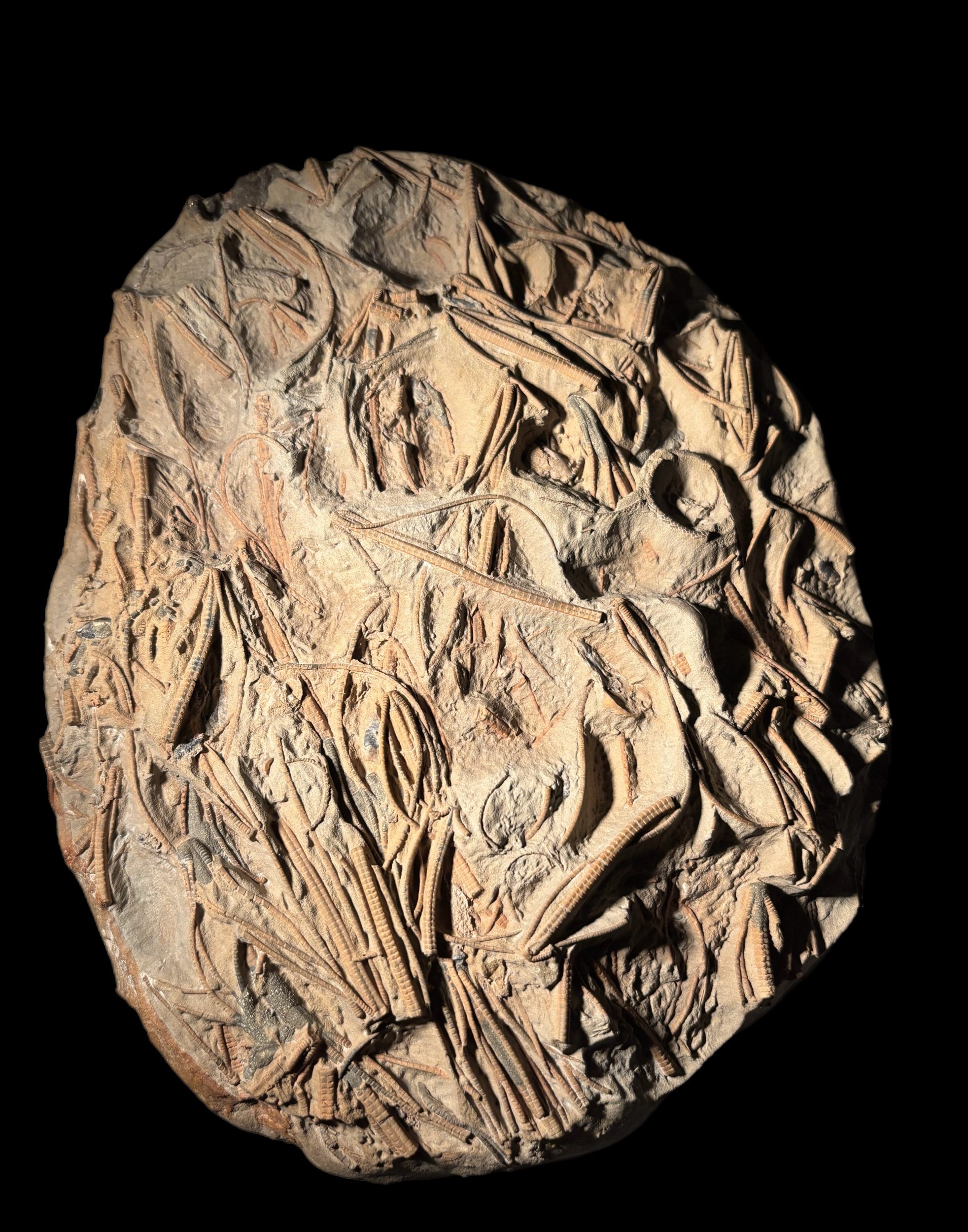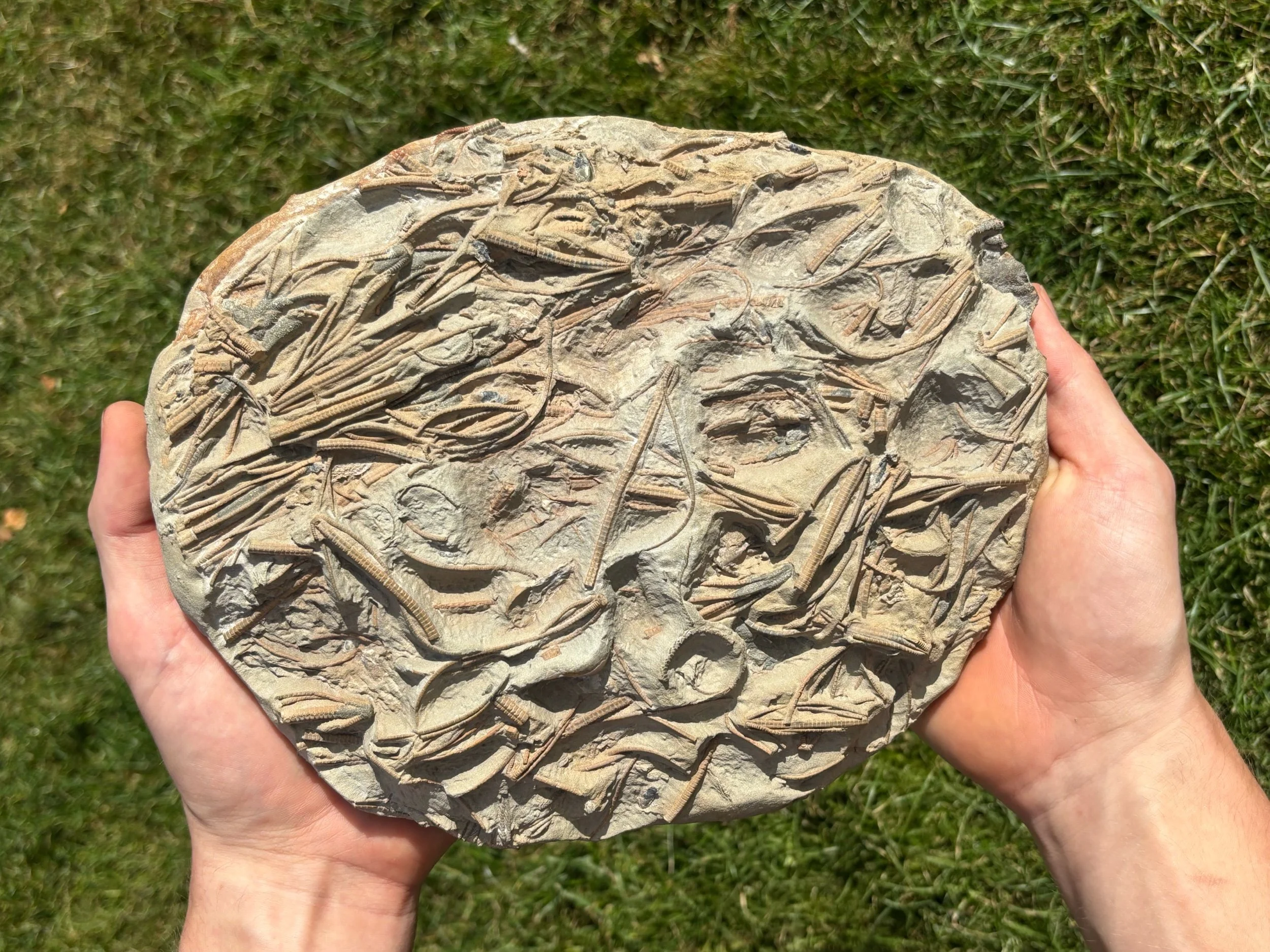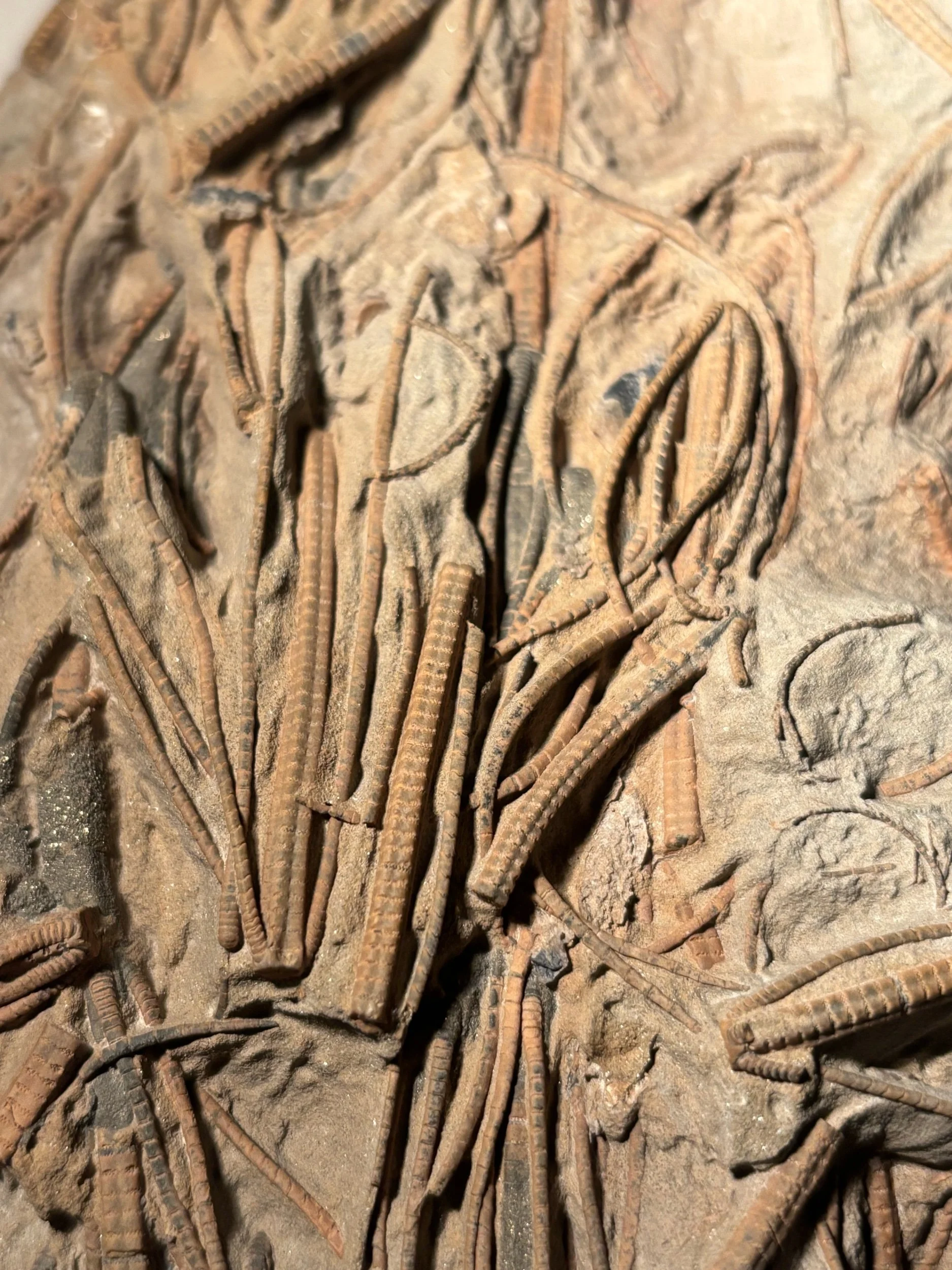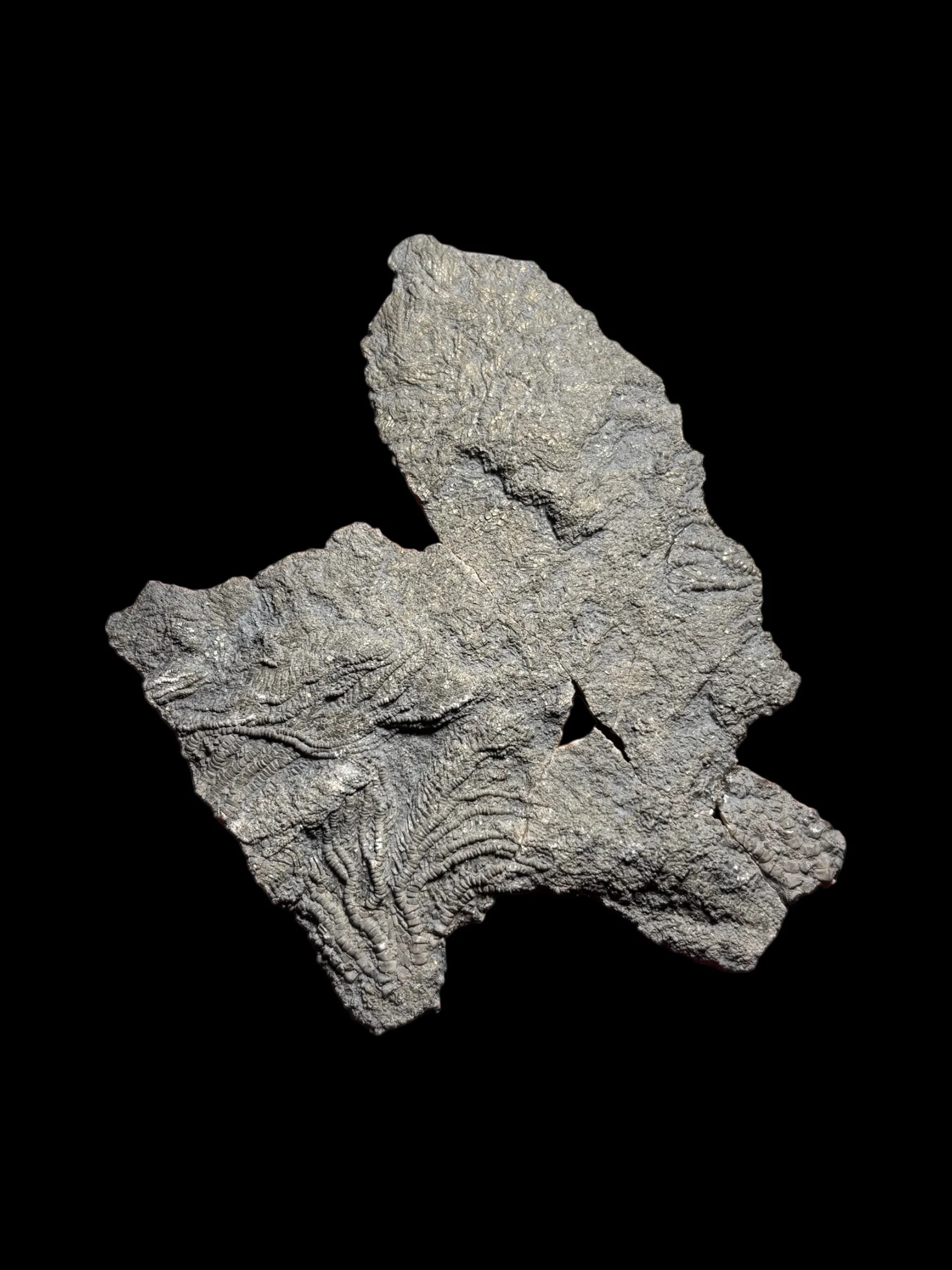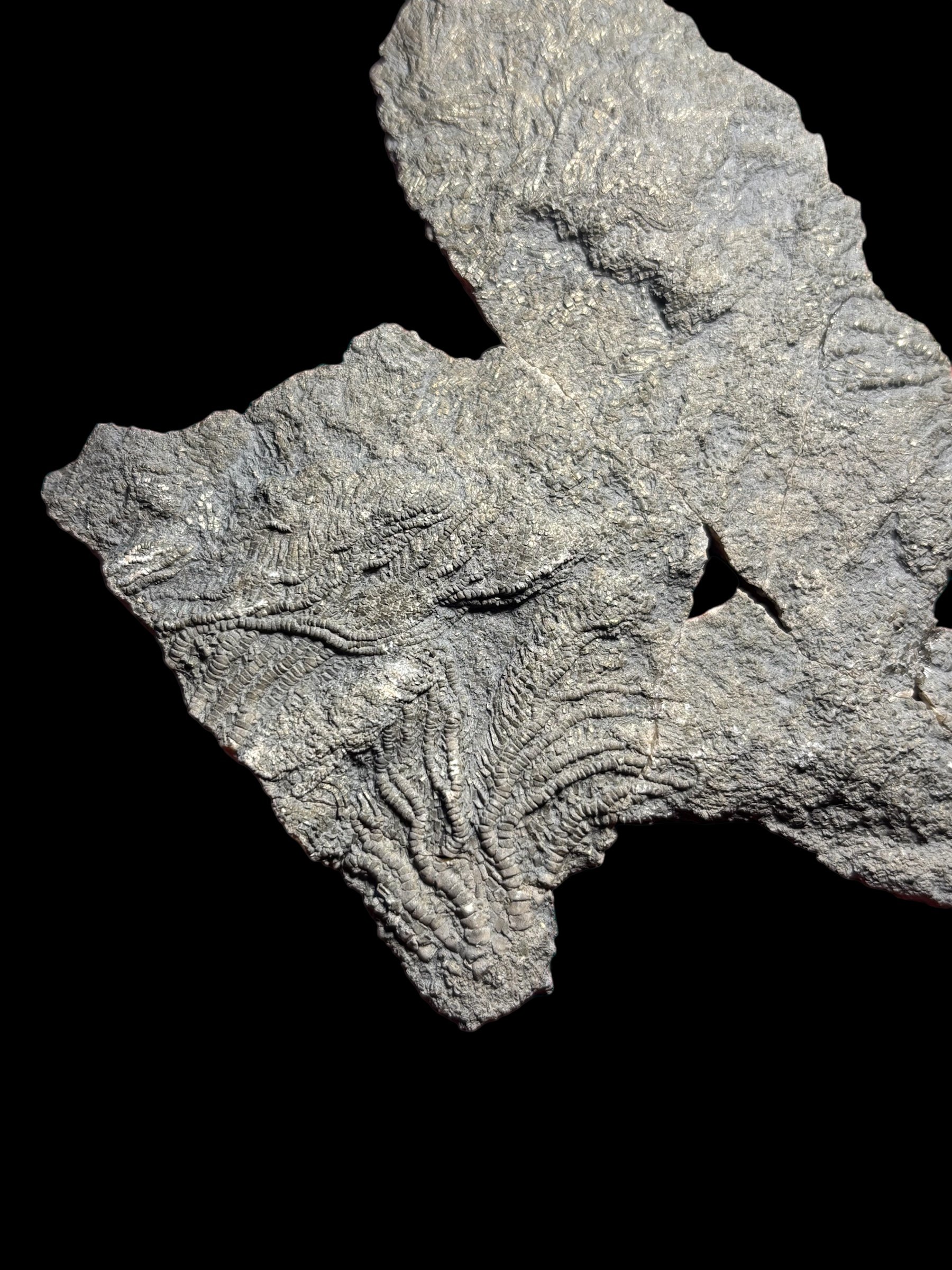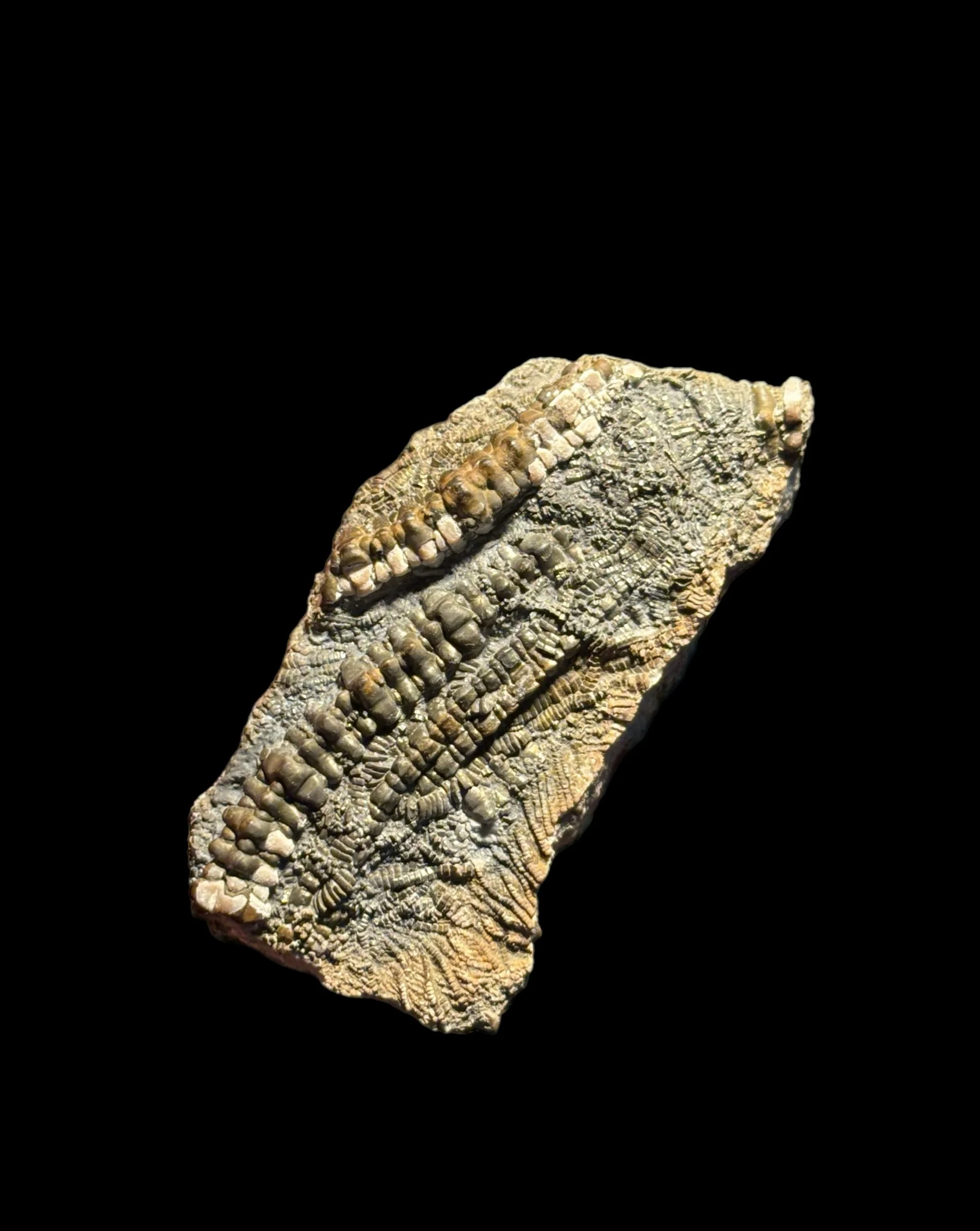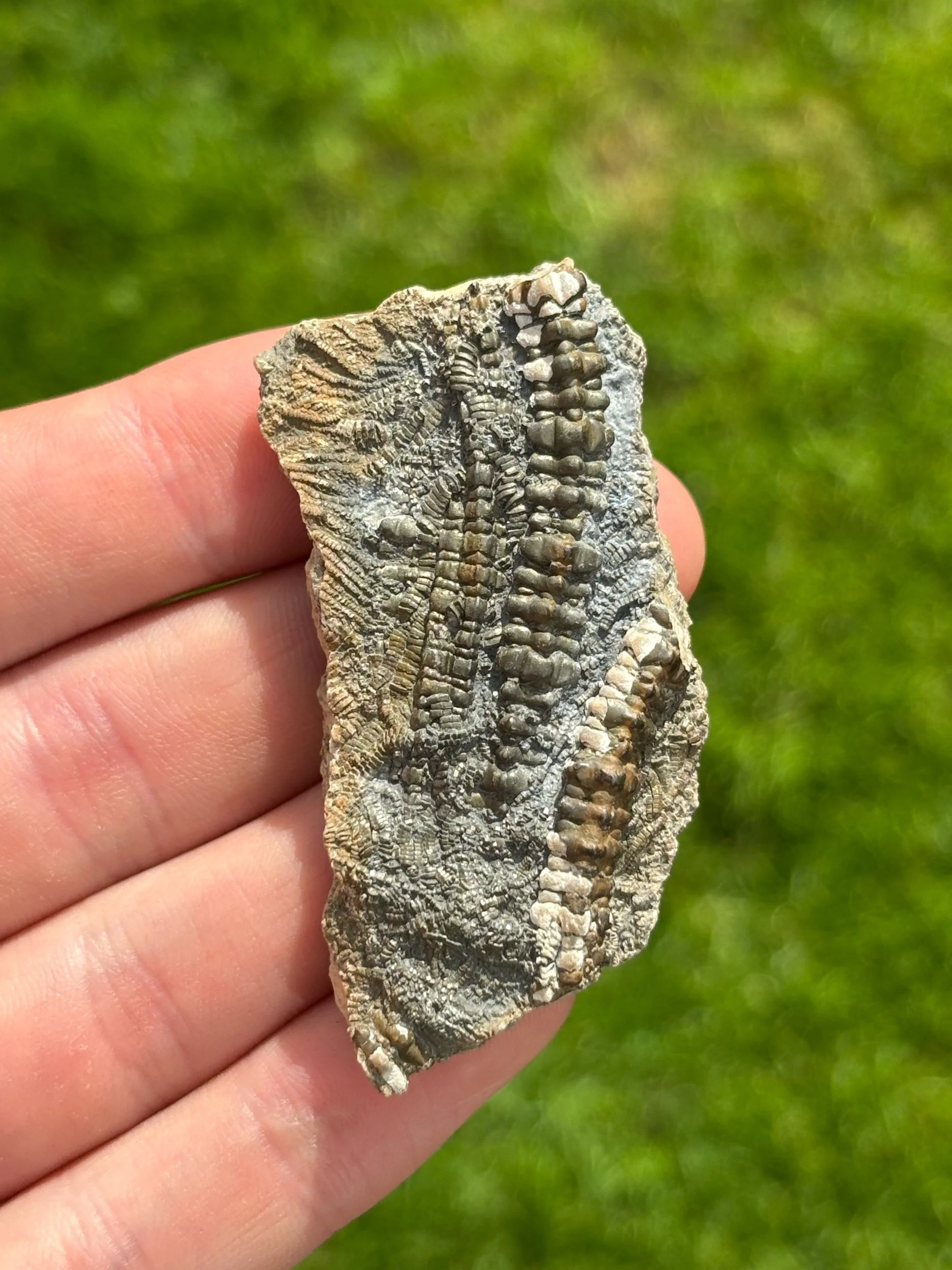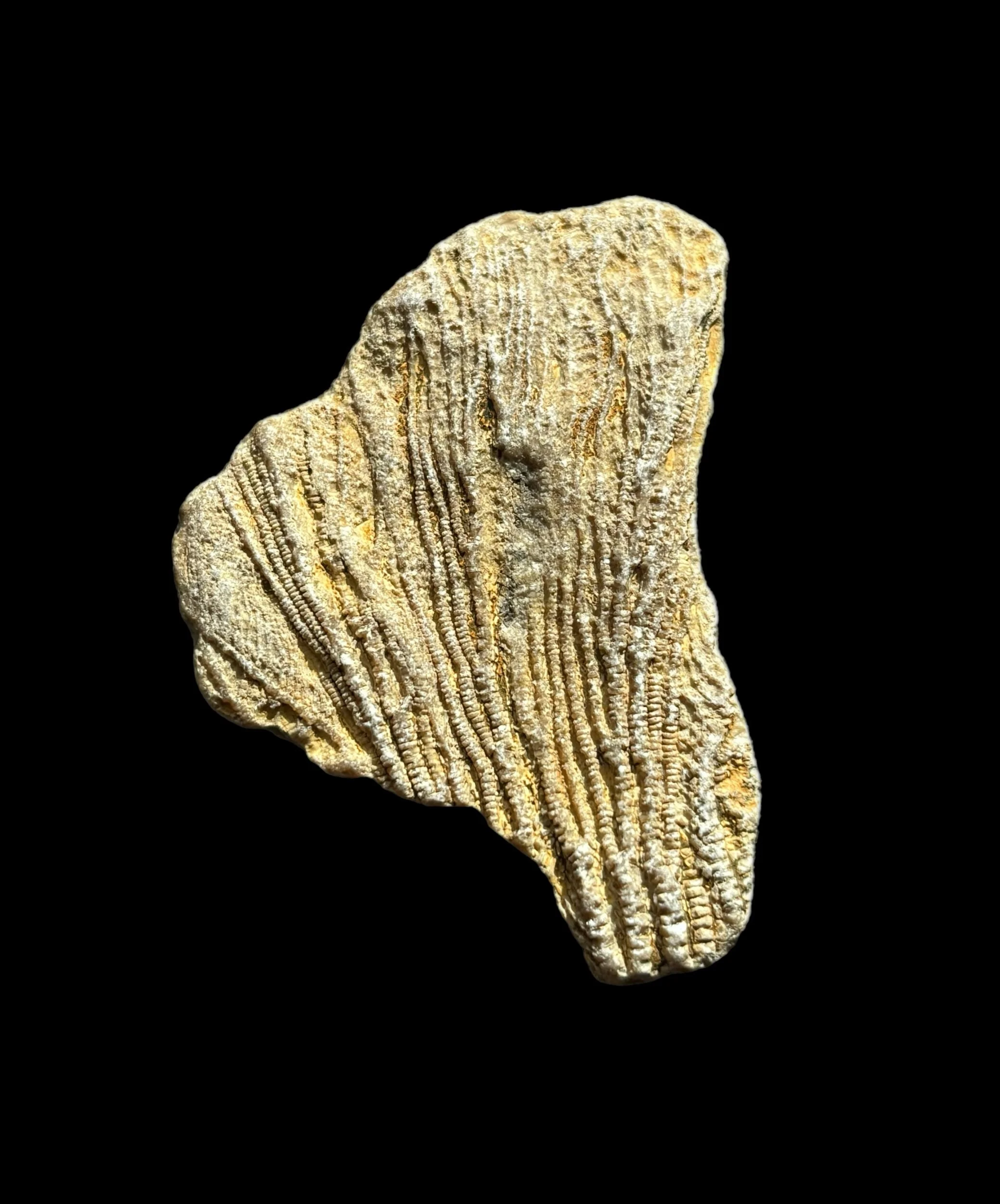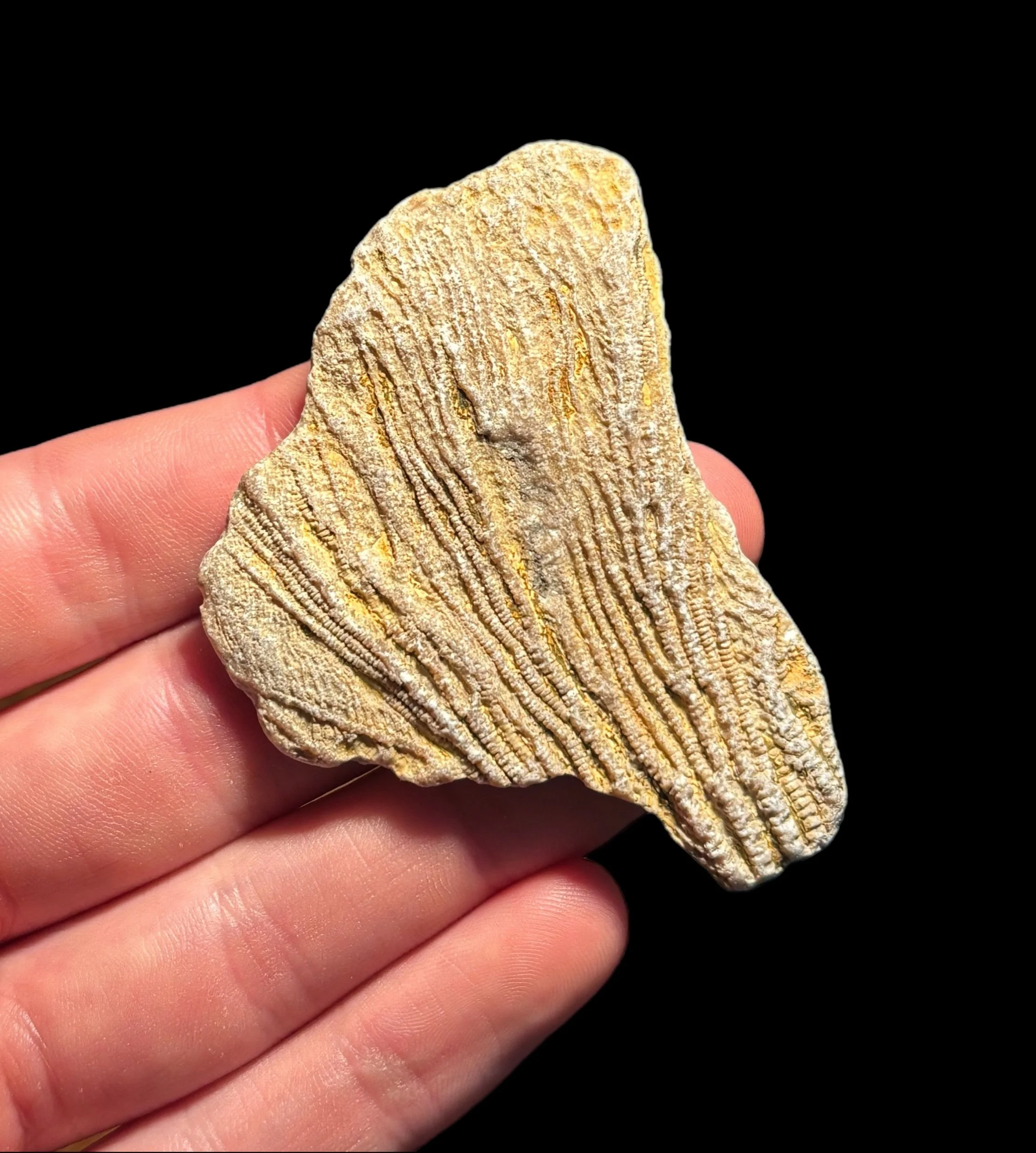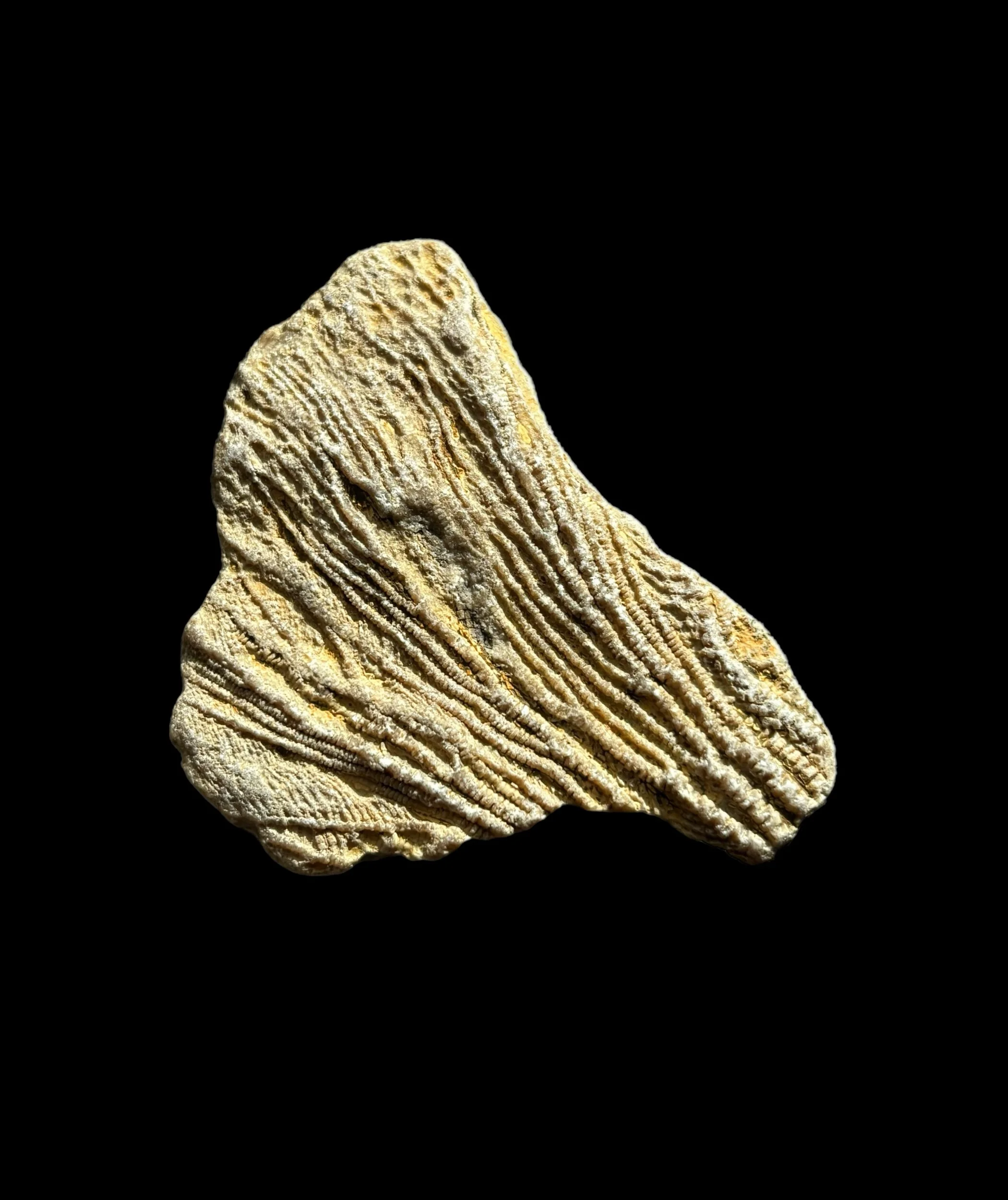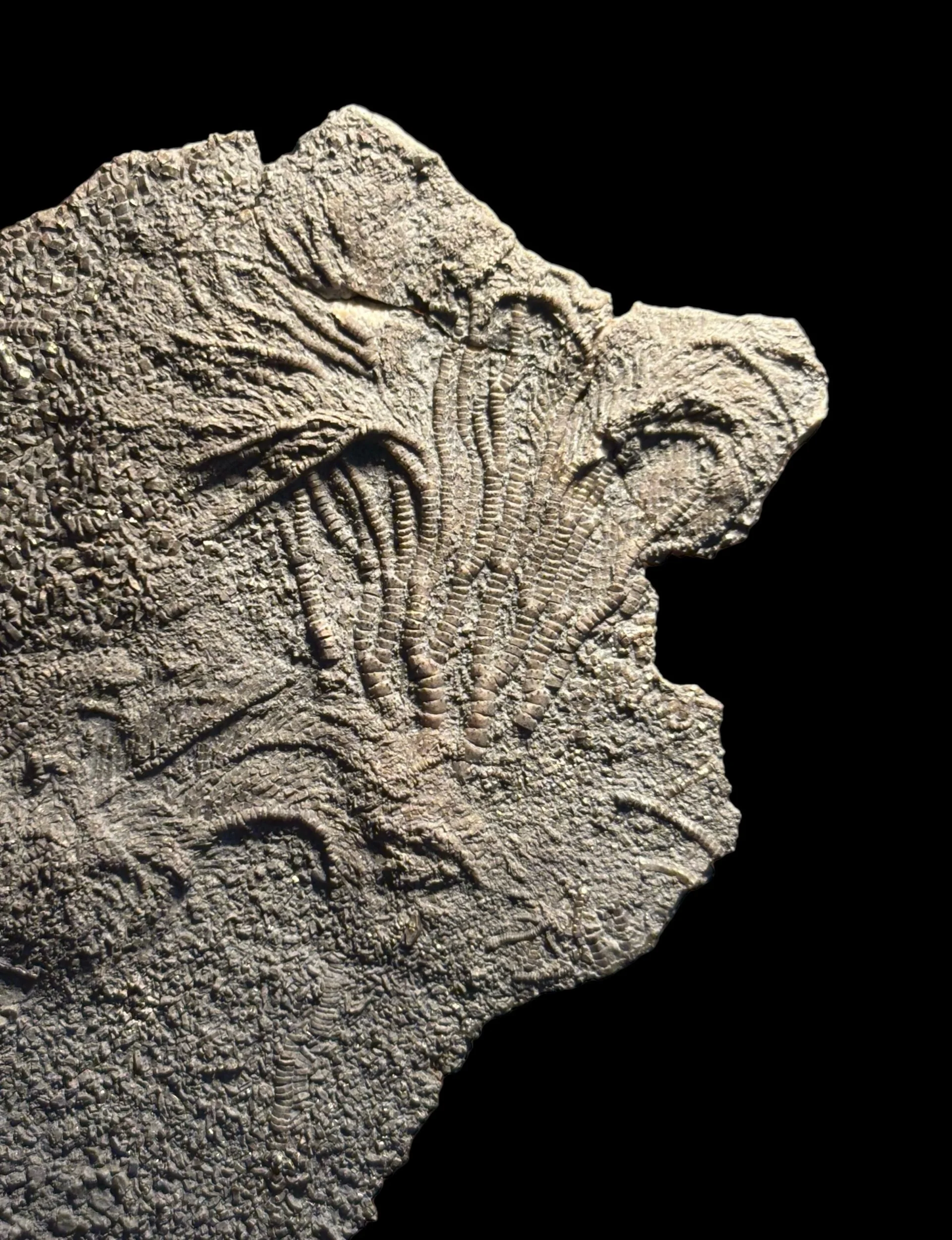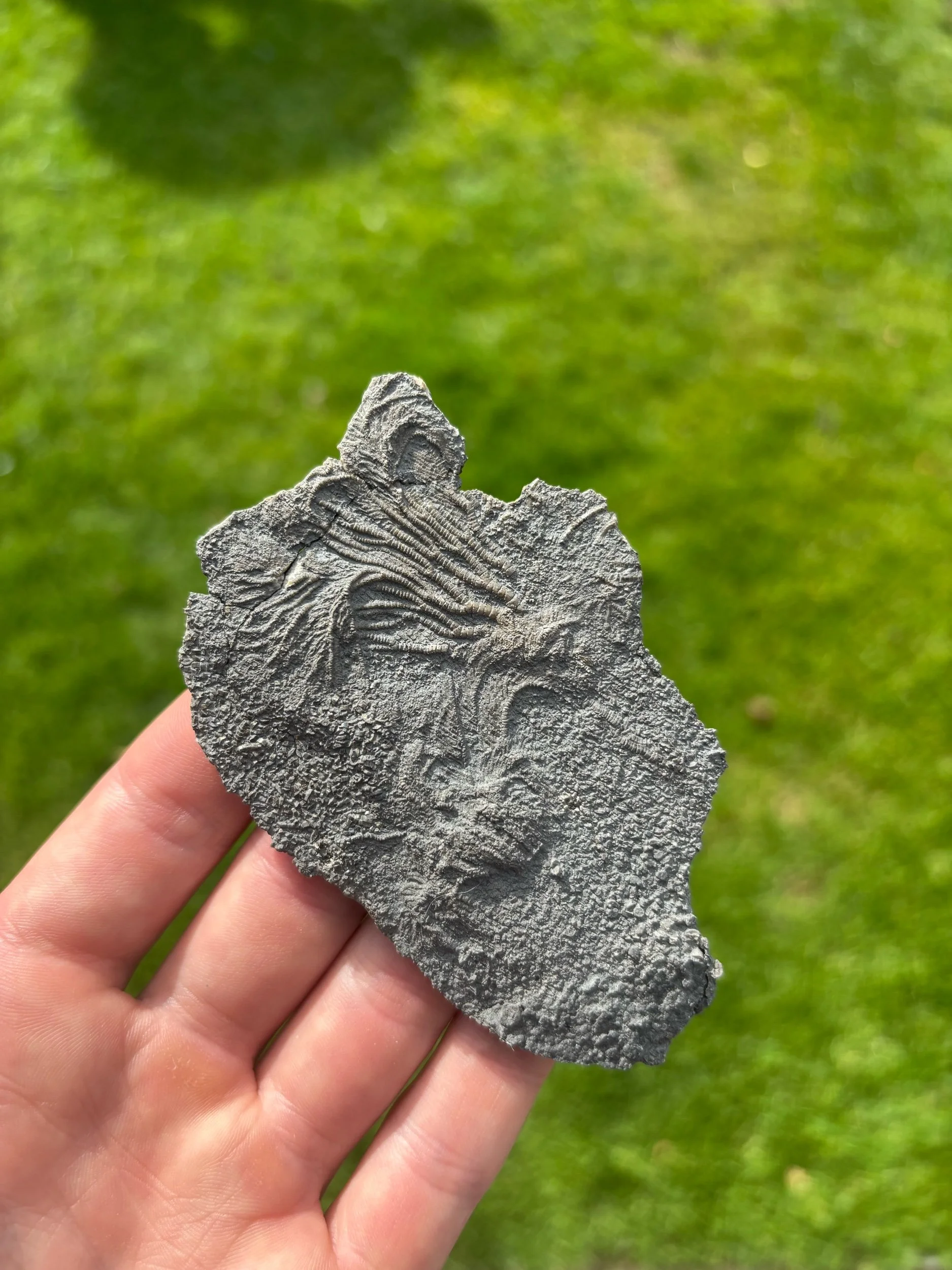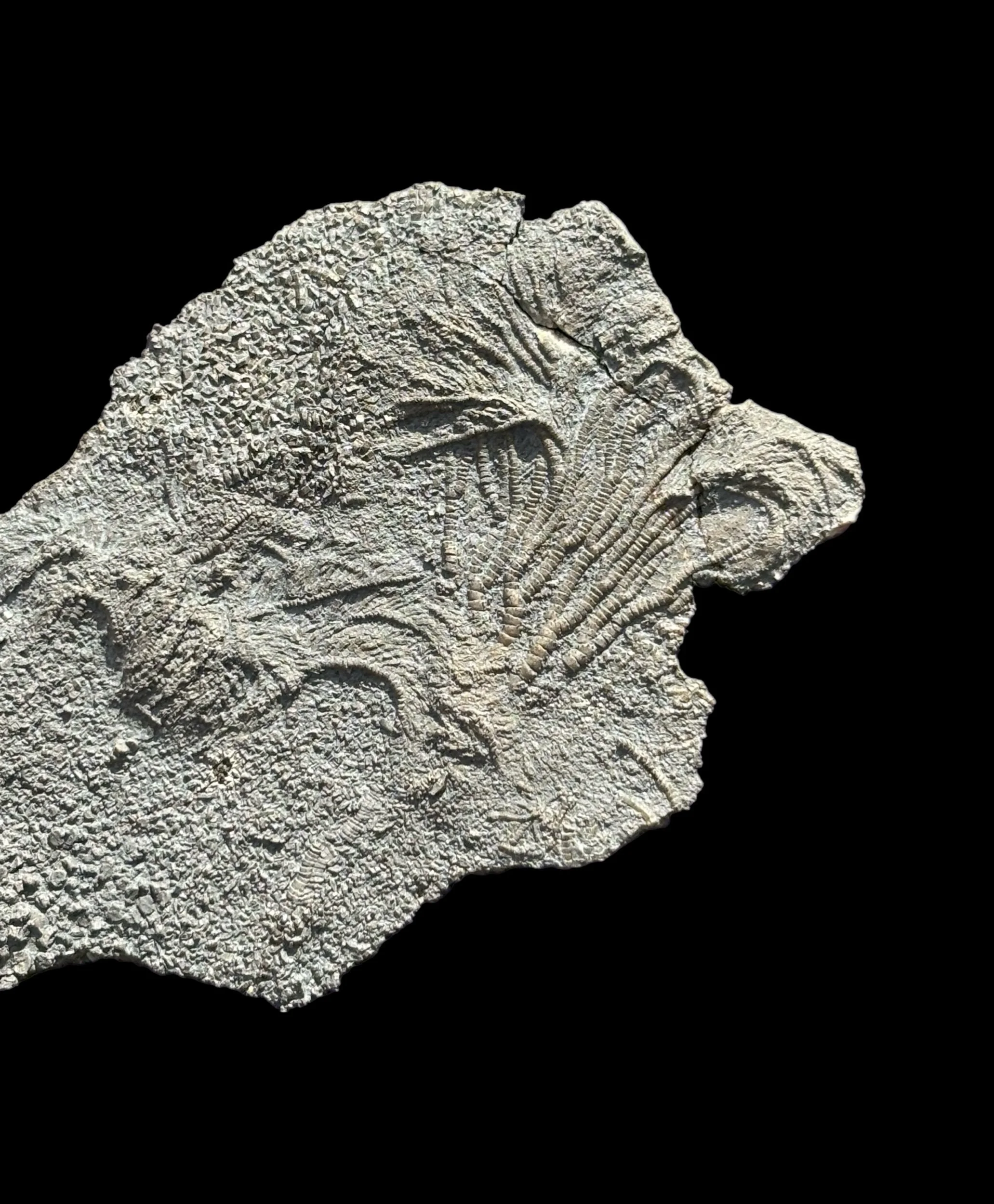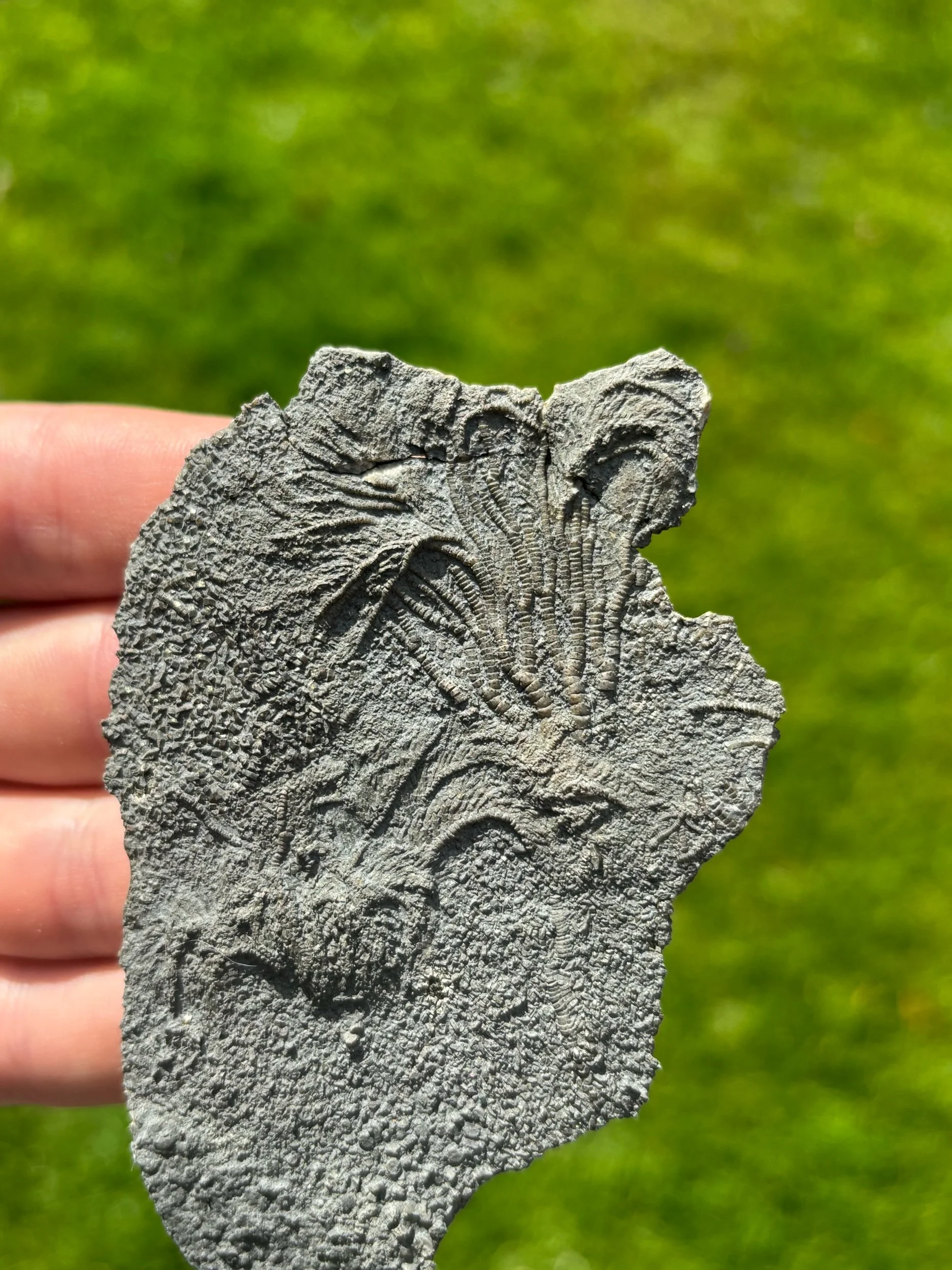

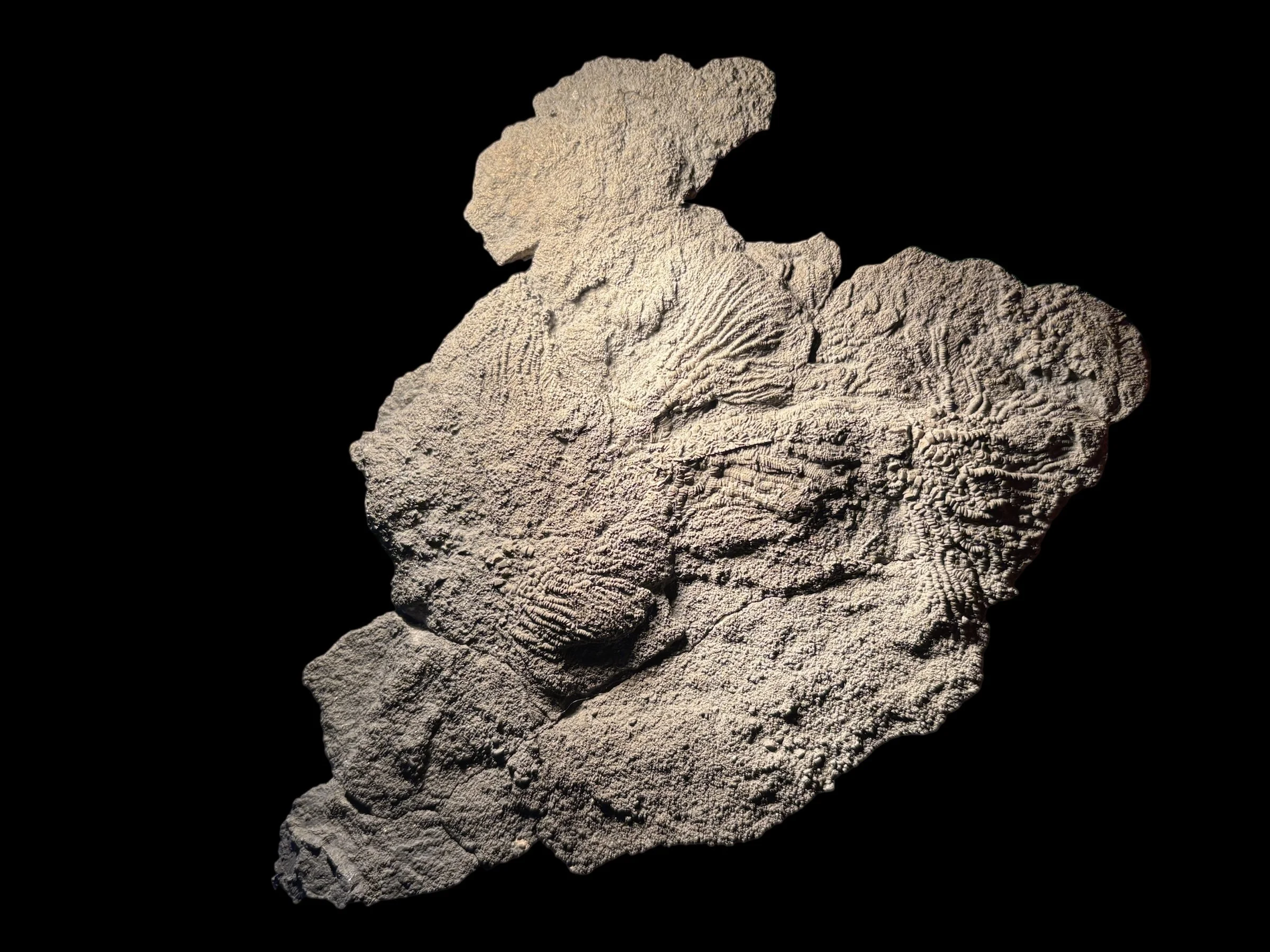
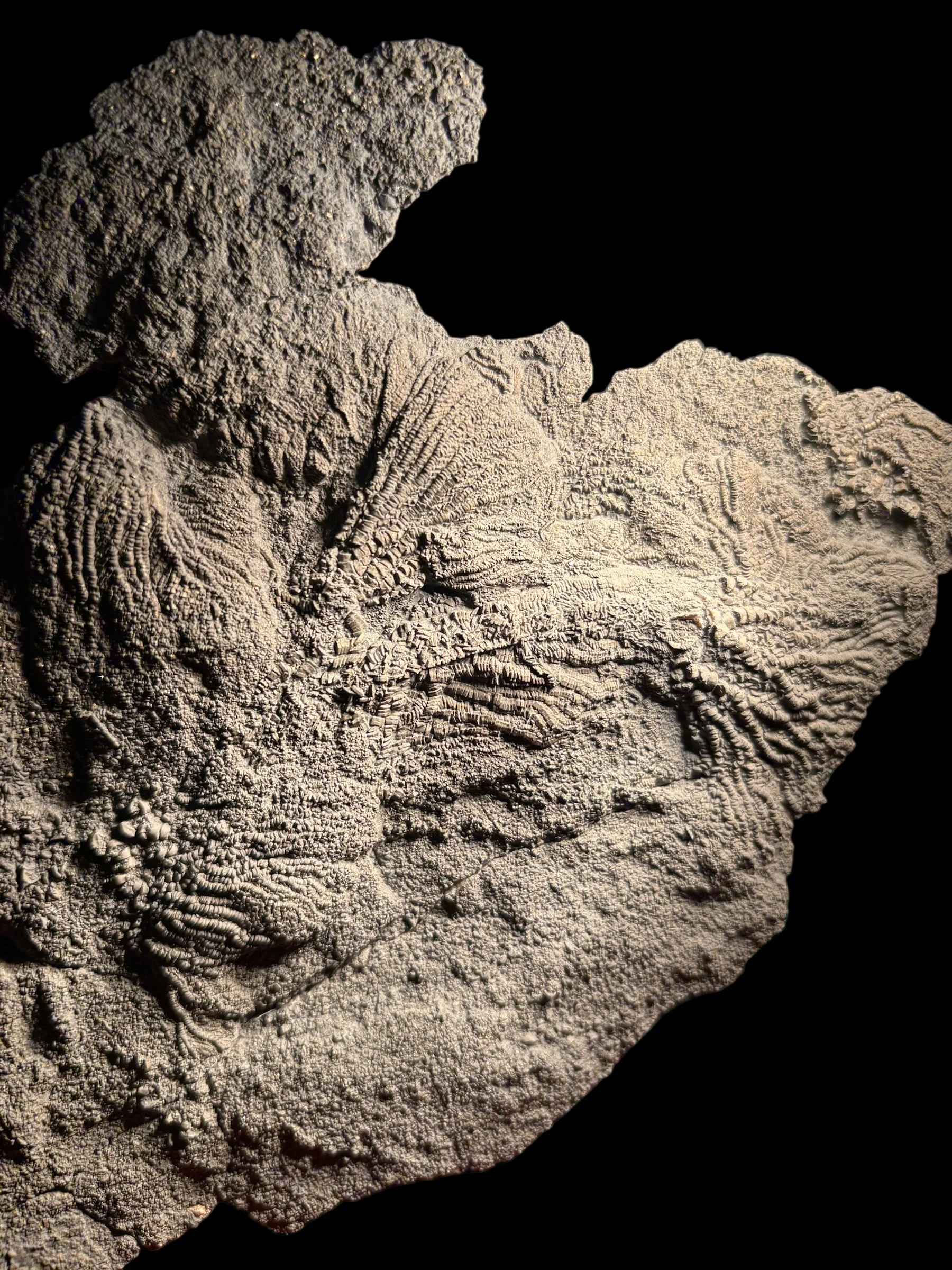

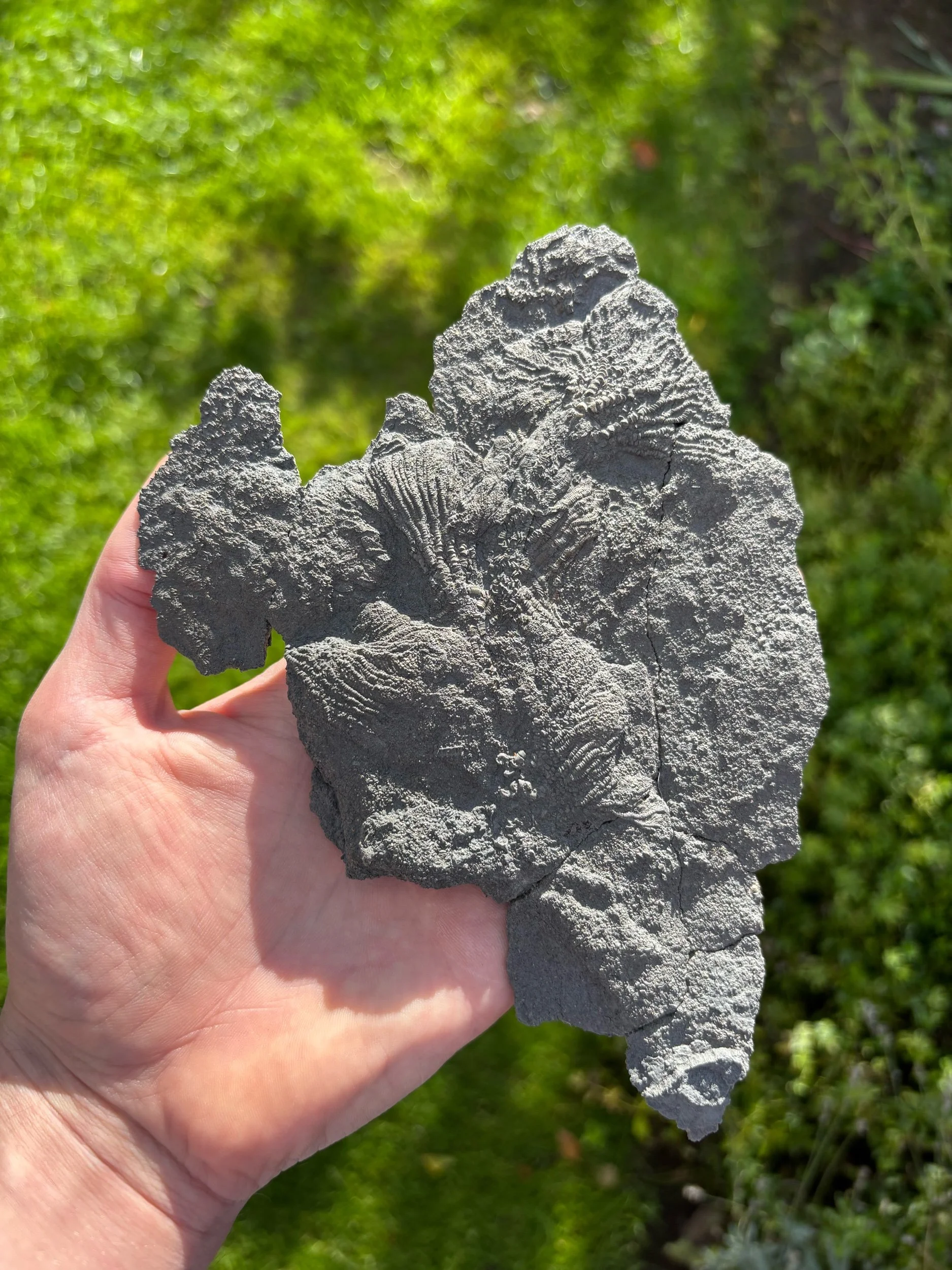
Crinoid Lens (Pentacrinites)
This crinoid fossil was found on the beach at Charmouth on the Jurassic Coast of Dorset in 2024, and displays some stunning detail with several complete crinoid heads. The fossil is preserved in calcite but has a thin layer of pyrite on top which gives it a shiny, metallic appearance. Likely from a young colony of crinoids as these crinoids are juveniles.
Crinoids would attach themselves to pieces of floating driftwood when juveniles, and would grow off the driftwood throughout their lives, hanging down into the water and filter feeding. When the driftwood became too heavy and was no longer buoyant, it would take the crinoid colony down with it to the seafloor, where the colony would sadly die and become fossilised.
Some species of crinoids are still alive today, although are rare in the modern-day oceans. Although they look relatively plant-like, crinoids are actually animals and are part of the echinoderm phylum, and are related to starfish, sea urchins and brittle stars.
Fossil dimensions: 17.5cm x 12.5cm x 1.5cm
Approximately 195 million years old
This crinoid fossil was found on the beach at Charmouth on the Jurassic Coast of Dorset in 2024, and displays some stunning detail with several complete crinoid heads. The fossil is preserved in calcite but has a thin layer of pyrite on top which gives it a shiny, metallic appearance. Likely from a young colony of crinoids as these crinoids are juveniles.
Crinoids would attach themselves to pieces of floating driftwood when juveniles, and would grow off the driftwood throughout their lives, hanging down into the water and filter feeding. When the driftwood became too heavy and was no longer buoyant, it would take the crinoid colony down with it to the seafloor, where the colony would sadly die and become fossilised.
Some species of crinoids are still alive today, although are rare in the modern-day oceans. Although they look relatively plant-like, crinoids are actually animals and are part of the echinoderm phylum, and are related to starfish, sea urchins and brittle stars.
Fossil dimensions: 17.5cm x 12.5cm x 1.5cm
Approximately 195 million years old


